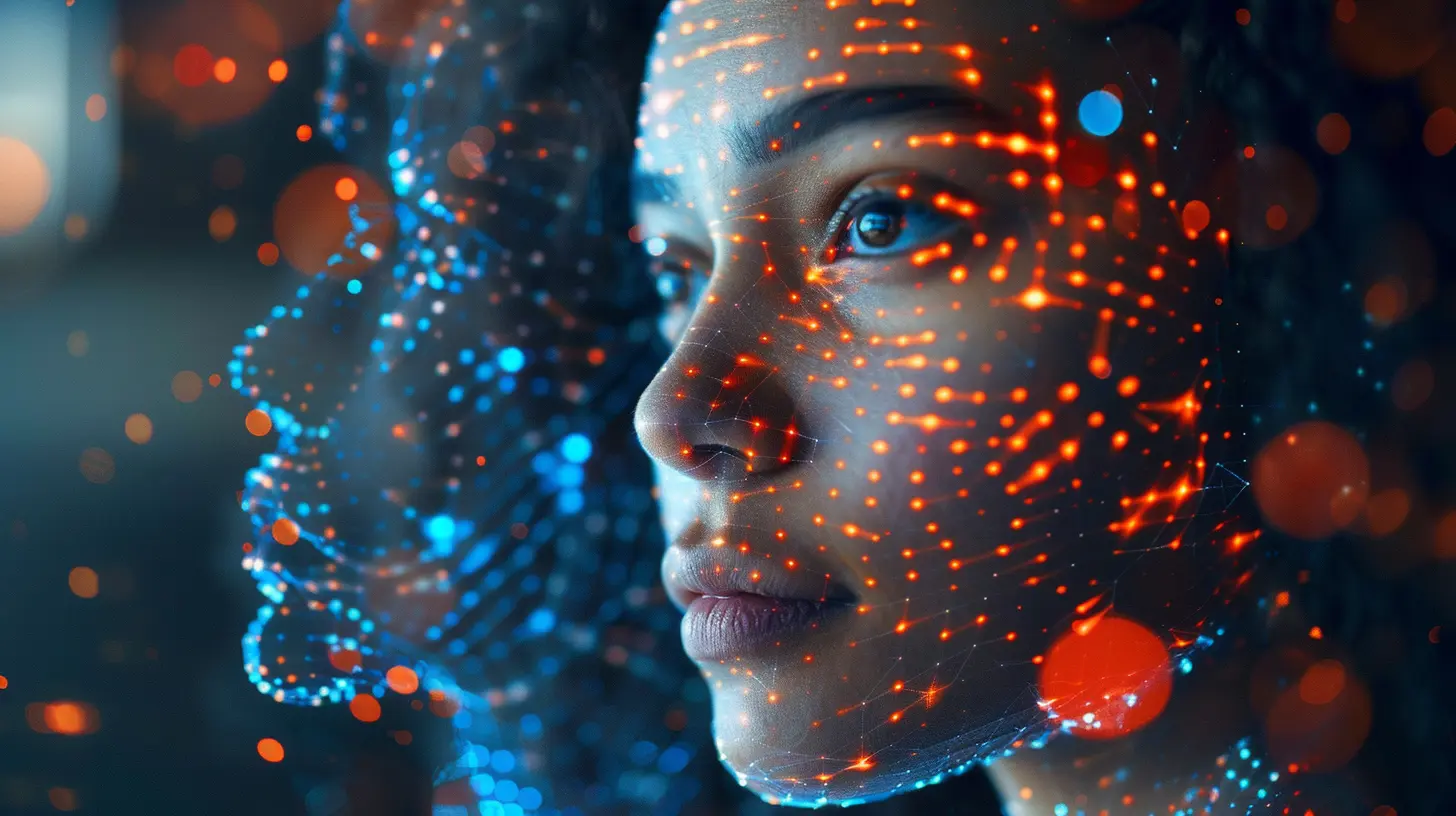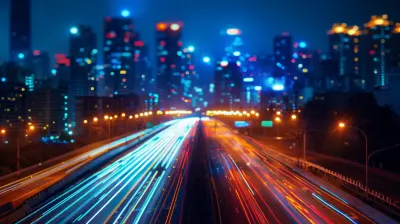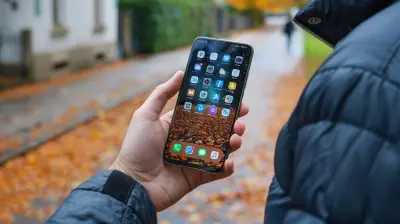How AI is Changing Photography with Computational Imaging
25 July 2025
Photography has come a long way since its early days of film cameras and darkrooms. In today's digital age, artificial intelligence (AI) and computational imaging are completely transforming how we capture, edit, and experience photos. From smartphone cameras producing professional-quality images to AI-powered enhancements making photography more accessible, the fusion of AI and imaging is rewriting the rules.
But how exactly is AI changing photography? What does computational imaging mean for photographers—both amateurs and professionals? Let’s dive into the world where AI meets photography and see how the magic happens!

What is Computational Imaging?
Before we get into AI’s role, let's break down computational imaging. Unlike traditional photography, which relies solely on optics and sensors, computational imaging leverages algorithms to process and enhance images. It involves complex mathematical models and AI techniques to improve image quality, reduce noise, and even create effects that would be impossible with traditional cameras.Think of computational imaging as having a built-in editing assistant that works in real-time, ensuring every shot looks its best before you even press the shutter button.

How AI is Revolutionizing Photography
AI is making photography smarter, faster, and more intuitive. From powering smartphone cameras to helping professional photographers fine-tune their masterpieces, here’s how AI is changing the game:1. AI-Powered Image Processing
Gone are the days when you needed expensive gear for stunning photos. Modern cameras—especially smartphones—rely on AI to optimize images on the fly. AI-driven image processing enhances colors, sharpness, and contrast, ensuring every shot looks breathtaking.Ever noticed how your phone's camera automatically adjusts brightness in low light or blurs the background in portrait mode? That’s AI at work! By analyzing the scene in real time, AI algorithms adjust camera settings to capture the best possible image without requiring manual tweaks.
2. Smart HDR and Computational Photography
High Dynamic Range (HDR) imaging used to be a complex process requiring multiple exposures merged into one. AI has taken HDR to the next level with Smart HDR, automatically capturing multiple frames and blending them seamlessly.Apple’s Smart HDR and Google’s HDR+ are prime examples of AI-driven computational photography. These technologies analyze different exposures and merge them for a balanced, detailed final image. No more overexposed skies or underexposed shadows—AI ensures every detail is preserved, creating lifelike images.
3. Night Mode and Low-Light Photography
Low-light photography has always been tricky. Traditional cameras struggle in dark environments, often leading to noisy or blurry images. AI-driven Night Mode changes the game by using computational photography to brighten images while reducing noise.By capturing multiple frames and using AI to merge them intelligently, cameras can produce well-lit, sharp images without a flash. This is why modern smartphones can take crystal-clear night shots that rival those from professional DSLRs.
4. AI-Based Portrait Mode and Bokeh Effects
Remember when you needed a DSLR with a fast lens to get a beautiful blurred background (bokeh effect)? AI has made that possible even with smartphone cameras.AI-powered Portrait Mode uses depth-sensing and machine learning to separate the subject from the background, creating a natural-looking blur. Some systems even allow users to adjust the blur effect after taking the photo—something that wasn’t possible with traditional optics alone.
5. AI-Assisted Composition and Framing
Not everyone is a photography expert, and that’s okay—AI is here to help! Some cameras now offer AI-assisted composition, guiding users to frame their shots for the best results. Features like Google's Top Shot automatically select the best frame from a burst of shots, ensuring you never miss the perfect moment.Some AI-powered software even suggests better cropping techniques or straightens out tilted horizons, making your photos look professionally composed with minimal effort.
6. Facial Recognition and Object Detection
AI’s ability to recognize faces and objects is transforming photography, making tasks like autofocus and subject tracking more efficient. Cameras powered by AI can detect faces, animals, and even specific objects, keeping them in focus no matter how much they move.This feature is especially useful in videography, where AI-driven autofocus ensures the subject remains sharp even in dynamic scenes. Sony’s Real-Time Eye Autofocus is a great example—using AI to track subjects' eyes and maintain focus for razor-sharp portraits.
7. Automated Photo Editing with AI
Editing used to be a time-consuming process, but AI-powered tools have simplified it. Applications like Adobe Photoshop and Luminar Neo use AI for tasks like:- Sky Replacement: AI can seamlessly swap out skies for more dramatic or colorful backgrounds.
- Skin Retouching: AI automatically smooths skin while maintaining natural textures.
- Object Removal: Unwanted objects can be erased in seconds, thanks to AI-powered content-aware fill.
AI-driven photo editing allows photographers—both casual and professional—to enhance their images effortlessly.
8. AI-Generated Images and Deepfake Photography
We’ve also entered an era where AI can create entirely new images. Tools like DALL·E and Generative Adversarial Networks (GANs) generate hyper-realistic images that don’t even exist in the real world.While this technology is exciting, it also raises concerns about deepfakes and digital manipulation. AI-generated imagery is becoming so realistic that distinguishing real from fake is increasingly difficult. This brings up ethical questions about authenticity in photography, journalism, and media.
9. AI in Security and Surveillance Photography
AI-powered cameras aren’t just for photography enthusiasts—they play a crucial role in security and surveillance. Facial recognition technology helps identify individuals in real-time, while AI-driven motion detection enhances security camera footage.These advancements improve crime prevention and public safety, but also raise concerns about privacy and misuse. Striking a balance between innovation and ethical responsibility is key in AI-powered photography applications.

The Future of AI in Photography
AI isn’t just a trend—it’s the future of photography. As computational imaging continues to evolve, we can expect even more mind-blowing innovations, including:- AI-powered zoom that maintains sharpness at extreme distances.
- Real-time photo enhancement using augmented reality (AR).
- Advanced 3D imaging and depth mapping.
- Intelligent cameras that adapt to users' preferences over time.
But with great power comes great responsibility. AI has the potential to revolutionize photography for the better, but ethical considerations—such as deepfake technology and privacy concerns—must be addressed.

Final Thoughts
AI and computational imaging are redefining what’s possible in photography. Whether you’re an amateur snapping photos on your phone or a professional looking for cutting-edge enhancements, AI is making photography more accessible, smarter, and more powerful than ever.As technology advances, one thing is clear: AI isn’t replacing photographers—it’s empowering them. So, the next time you take a photo with your smartphone or DSLR, remember that there's some serious AI magic happening behind the scenes!
all images in this post were generated using AI tools
Category:
Tech TrendsAuthor:

Reese McQuillan
Discussion
rate this article
1 comments
Gabriella McPhee
Great insights! It's fascinating how AI and computational imaging are revolutionizing photography, making creativity more accessible while pushing the boundaries of what's possible. Excited to see where this technology takes us next!
August 1, 2025 at 3:22 AM

Reese McQuillan
Thank you! I'm glad you found it fascinating. The possibilities with AI and computational imaging are indeed exciting, and I can't wait to see how they continue to transform photography!


